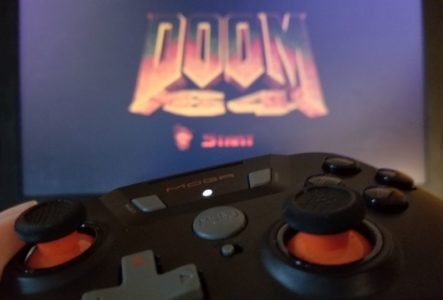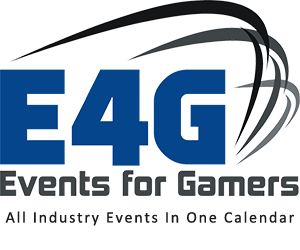Whether homebound or on the go, one of the main accessories a gamer needs is a good controller (or a mouse and keyboard, if, say, a PC gamer). Granted, many folks do look for keyboards and mice, especially when they are PC gamers, but as someone who has a soft spot for old-school games, I often like to return to my roots and see what a classic controller can do with a console-oriented gaming experience, regardless of the platform. In this case, the MOGA controller is marketed for Android smartphone gaming, but it can also be used as a general purpose wired/wireless controller, at least in some instances.
Made by PowerA, the MOGA XP5-A Plus Bluetooth Controller (which is not really the most memorable sort of name for a controller) weighs in at $69.99. Where does this controller fit into a gamer’s array of interface options? Let’s dive into find out.
The package deal
The packaging is an attractive semi-glossy box, with a Darth Vader-esque clamshell with the controller and phone clip with adjustable arm inside. Not to be overlooked, the accessories: There’s a full-color instruction manual and a 6.6 foot micro USB to standard USB cable and an 11.8 inch micro-USB to USB type-c/micro USB cable in plastic packaging. We’ll cover how each of these cables can be used shortly.
Out of the box
The controller layout resembles a console-type controller, so anyone familiar with an Xbox-style layout will feel comfortable enough to pick and get started right away. The XP5-A Plus’ size feels roughly between Xbox and PlayStation when in hand, which should be comfortable for most gamers.
As for the button layout, the asymmetrical analog thumbsticks is a layout I prefer. Right analog thumbstick, four buttons, top-facing function buttons, and right bumper and trigger for the right hand. On the left, the D-pad, left analog thumbstick and left bumper and trigger. It’s a familiar and ergonomic design that feels pretty comfortable to play with. Each of the buttons, sticks and the D-pad feel like they strike a good balance between too mushy and too sticky. The rubberized controller grips aren’t too obtrusive, thankfully, and do a good job of making a firm grasp on the controller a little easier.
The “secret sauce” for this is the mappable third keys, which lie flat against the bottom and “wings” of each controller. It’s the most useful for swapping control assignments on-the-fly while in game. Added up, these are a lot of buttons, but you can’t say the MOGA XP5-A Plus doesn’t come packed with options.
The MOGA controller came with a half charge out of the box, and I wanted a 3/4 to full charge before trying out the battery pack functionality and Bluetooth wireless capability, so I plugged it into a laptop’s USB to power it up. However, any powered USB port should work fine to get the charge to where you want it.

The first time charging called for just under 2 hours to get fully juiced. Using the built in 3,000 mAh charge as a back-up energy source should buy gamers enough time to get through a play session, even with bigger, most recent Android phones. The charge level notification on the power bank is easy to spot, with the row of green lights under the D-pad on the left.
As for the two included cables, the foot-long cable is a standard USB to USB-C/Micro-USB, which gives you the ability to connect the XP5-A Plus to your phone for recharging purposes or for gaming. The 6.6ft (2m) micro USB to standard USB cable serves as a connection to a computer, either to charge the controller’s battery or for play.
When using the XP5-A Plus with a phone, it’s nice to have the arm and stand accessory handy. With rubberized contact areas, that should keep scratches from marring your phone or case. I tested the clip on an Apple iPhone XS (not compatible with the controller) with a case, and it comfortably handled the 3″ width, but it’s officially okayed for a phone size up 3.12″ (79mm).
Specs
- Multi-device capable, on mobile, PC and cloud gaming platforms
- Charge your phone while you play or between sessions with integrated internal 3000mAh power bank
- Two mappable “Advanced Gaming Buttons”
- Detachable phone clip with adjustable arm fits devices up to 3.12” (79mm) wide
- Connect to your phone, tablet, laptop or TV via Bluetooth wireless or USB wired mode
- Ergonomic design with standard button layout
- Tuned analog thumbsticks
- Injected rubber grips on back
- Micro USB + Standard USB ports and cables included (for charging controller, phone and other mobile devices)
- Weight: 1.08 lbs (489.9g)
- Dimensions: 6″ (15.24cm) length 4″ (10.16cm) width 2.5″ (6.35cm) height
- Two-year limited warranty
Performance
I tried the MOGA XP5-A controller with a variety of mobile, PC, and the Stadia cloud gaming service. On mobile, via a Samsung Galaxy phone, whether by USB or Bluetooth I was able to play Reaper and Bombsquad, both of which are controller-enabled. With a little configuration, the games were up-and-running just fine. Making sure the games you try have compatibility with a controller is a must.
The PC experience was a little more tricky. Some games that were supposed to be controller-enabled worked, some did not. Wired mode worked better for me — with a caveat. The Xinput mode, which works with PC and Xbox games, is accessible via selecting and holding Start and Select on the face of the controller for three seconds. Then, a Windows PC is able to play Xinput games with this controller. I tried playing Blue Revolver, an indie shmup game. While I wish I was more of an ace at this arcade-like bullet hell shooter, I can’t blame the controller, which worked without a hitch.

From the cloud gaming perspective, Stadia on Android worked like a breeze, whether via Bluetooth or connected via USB. The Stadia’s PC experience worked for me after enabling Xinput capability on the XP5-A Plus, at least via USB connection. Playing Doom 64 on Stadia requires fast, adrenalized responses, and control was equally quick, comfortable, and enjoyable on either Android or PC.
Pros
- Versatile, whether for Android (or other) game control or charging mobile devices
- Plenty of buttons equals plenty of options for controlling a game
- Wired or wireless connectivity and usage
- Very good build quality, with a comfortable Xbox-style layout
Cons
- Rather high ($69.99) retail price
- Not as much of a plug-and-play experience outside of Android
Ideal for
The MOGA XP5-A Plus Bluetooth Controller isn’t quite a catch-all controller, but on the platforms and software that it works on, it does the job very well. All in all, this controller from PowerA comes recommended, especially for Android mobile gamers who don’t want to settle for a less-than PC or console level of control with their games.







